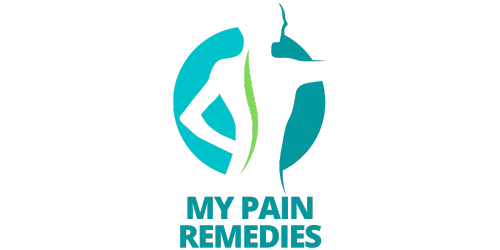Are you tired of the constant throbbing, shooting pain in your face? Look no further, as this article will provide you with a range of atypical facial pain home remedies. From natural remedies like warm compresses and herbal supplements to lifestyle changes such as stress reduction techniques and diet modifications, these solutions aim to alleviate your discomfort and improve your quality of life. Say goodbye to your facial pain and hello to a pain-free future with these effective remedies that you can easily try at home.

Hot or Cold Compress
Applying a hot compress
When dealing with atypical facial pain, applying a hot compress can provide relief and help reduce inflammation. To apply a hot compress, you can soak a clean towel in hot water, making sure it’s not too hot to avoid burning your skin. Wring out the excess water and place the towel on the affected area of your face. You can also use a heating pad or a hot water bottle wrapped in a cloth if you prefer. Leave the hot compress on for about 15-20 minutes, and repeat as needed throughout the day.
Applying a cold compress
Alternatively, a cold compress can also be effective in relieving atypical facial pain. Wrap some ice cubes or a bag of frozen vegetables in a thin cloth and apply it to the painful area of your face. Make sure not to apply ice directly to your skin to prevent ice burn. Leave the cold compress on for about 10-15 minutes, and you can repeat this several times a day. The cold temperature helps reduce inflammation and numb the pain, providing temporary relief.
Aromatherapy
Lavender oil
Lavender oil, known for its soothing and calming properties, can be a helpful remedy for atypical facial pain. You can apply a few drops of lavender oil directly to the affected area and gently massage it in using circular motions. The aroma of lavender oil can help relax both your mind and body, providing relief from pain and tension. If you prefer, you can also add a few drops of lavender oil to a warm bath and soak for 15-20 minutes to promote relaxation.
Peppermint oil
Peppermint oil is another essential oil that can be beneficial in managing atypical facial pain. It has a cooling effect and contains menthol, which helps alleviate pain and reduce inflammation. You can mix a few drops of peppermint oil with a carrier oil, such as coconut or jojoba oil, and apply it to the painful area using gentle motions. Be cautious not to get any oil near your eyes to avoid irritation. Inhaling the scent of peppermint oil can also provide a refreshing sensation and help relieve pain.
Eucalyptus oil
Eucalyptus oil has analgesic properties that make it a suitable choice for addressing atypical facial pain. Like lavender and peppermint oil, you can apply a few drops of eucalyptus oil to the affected area and gently massage it in. The invigorating scent of eucalyptus oil can clear your nasal passages and promote relaxation. It is important to note that essential oils can be potent, so it’s best to dilute them with a carrier oil before use and discontinue if any irritation occurs.
Herbal Remedies
Cloves
Cloves are a natural remedy that has been used for centuries to alleviate pain, including atypical facial pain. Clove oil contains eugenol, a compound known for its analgesic and anti-inflammatory properties. You can apply a few drops of clove oil to a cotton ball and gently dab it onto the affected area. The numbing effect of cloves can help temporarily relieve pain. If you prefer, you can also brew a cup of clove tea by steeping a few cloves in hot water, and drink it for added relief.
Ginger
Ginger is a versatile herb that offers numerous health benefits, including pain relief. It contains compounds called gingerols that have anti-inflammatory properties and can help reduce atypical facial pain. You can make ginger tea by steeping freshly grated ginger in hot water for about 10 minutes. Strain the ginger and add honey or lemon for added flavor. Drinking ginger tea a few times a day can help ease pain and reduce inflammation.
Turmeric
Turmeric is another herbal remedy commonly used for its anti-inflammatory properties. It contains a compound called curcumin, which has been found to have analgesic and pain-relieving effects. Adding turmeric to your meals or consuming turmeric tea can help reduce atypical facial pain. To make turmeric tea, mix one teaspoon of turmeric powder with hot water and add honey or lemon to taste. Drink this tea regularly to reap the potential benefits.
Saltwater Rinse
Dissolving salt in warm water
A saltwater rinse can provide relief for atypical facial pain, particularly if it is caused by sinus congestion or infection. To make a saltwater rinse, dissolve half a teaspoon of salt in a cup of warm water. Stir until the salt is completely dissolved before using the solution. You can adjust the salt concentration according to your preference, but it’s best not to use excessive amounts that may cause discomfort.
Gargling with the saltwater solution
Once the salt is dissolved, take a small sip of the saltwater solution and gargle it in the back of your throat for about 30 seconds. Tilt your head back slightly to ensure the solution reaches the affected sinus areas. After gargling, spit the solution out and repeat several times a day, especially when experiencing pain or discomfort. The saltwater rinse helps reduce inflammation and can provide temporary relief from atypical facial pain associated with sinus issues.

Acupuncture
Seeking professional acupuncture treatment
Acupuncture is an ancient practice that involves stimulating specific points on the body with thin needles to promote healing and relieve pain. Seeking professional acupuncture treatment for atypical facial pain can be an effective option. During an acupuncture session, a licensed practitioner will carefully insert sterilized needles into specific acupuncture points to balance the body’s energy flow and potentially relieve pain. Acupuncture is generally considered safe when performed by a trained professional.
Providing relief from atypical facial pain
Acupuncture has been found to provide relief from atypical facial pain by releasing endorphins, which are natural pain relievers, and improving blood circulation. The precise placement of the needles targets the areas of pain or discomfort, and the treatment can be tailored to your specific needs. Regular acupuncture sessions may be recommended for optimal results, and it’s important to consult with a licensed acupuncturist to ensure safe and effective treatment.
Yoga and Meditation
Practicing deep breathing exercises
Practicing deep breathing exercises can be beneficial in managing atypical facial pain. Deep breathing helps promote relaxation, reduce stress, and increase oxygen flow to the brain, which can alleviate pain. Find a comfortable seated position, close your eyes, and take a deep breath in through your nose, allowing your abdomen to expand. Hold your breath briefly and then exhale slowly through your mouth. Repeat this deep breathing exercise several times, focusing on releasing tension and finding inner calm.
Engaging in mindfulness meditation
Mindfulness meditation involves bringing your attention to the present moment and observing your thoughts and feelings without judgment. This practice can help reduce stress and increase awareness of bodily sensations, including pain. Find a quiet and comfortable space, sit or lie down, and close your eyes. Focus on your breath as you inhale and exhale, allowing thoughts to come and go without engaging with them. Engaging in mindfulness meditation regularly can help you manage atypical facial pain more effectively.
Trying facial muscle relaxation techniques
Facial muscle relaxation techniques can help alleviate tension and tightness in the muscles that may contribute to atypical facial pain. Start by sitting in a comfortable position and gently closing your eyes. Take a few deep breaths to relax your body and then focus on each area of your face individually. Begin with your forehead, and consciously release any tension in that area. Move down to your eyebrows, cheeks, jaw, and finally, your neck. Repeat this process a few times, allowing your facial muscles to relax completely.
Nutritional Changes
Avoiding trigger foods
Making nutritional changes can play a significant role in managing atypical facial pain. Avoiding trigger foods that may exacerbate pain or inflammation is essential. Some common trigger foods include processed foods, refined sugars, caffeine, alcohol, and certain spices. It’s important to identify which foods worsen your symptoms and eliminate them from your diet. Keeping a food diary can help track any potential triggers and make it easier to identify patterns.
Incorporating anti-inflammatory foods
Incorporating anti-inflammatory foods into your diet can help reduce atypical facial pain and promote overall well-being. Foods such as fatty fish (salmon, mackerel), leafy greens (spinach, kale), berries, nuts, and seeds are known for their anti-inflammatory properties. These foods are rich in omega-3 fatty acids, antioxidants, and other essential nutrients that can help reduce inflammation and support pain management. Consult a healthcare professional or a registered dietitian to create a personalized anti-inflammatory meal plan.
Drinking sufficient water
Staying hydrated is crucial for maintaining optimal health and managing atypical facial pain. Dehydration can worsen pain and increase tension in the body. Make sure to drink sufficient water throughout the day to keep your body hydrated. The recommended daily intake varies for each individual, but a general guideline is to drink at least 8 cups (64 ounces) of water per day. If you find it challenging to drink plain water, you can infuse it with fruits or herbs for added flavor.
Over-the-counter Pain Medication
Taking over-the-counter pain relievers
Over-the-counter pain medications can provide temporary relief from atypical facial pain. Nonsteroidal anti-inflammatory drugs (NSAIDs), such as ibuprofen, can help reduce pain and inflammation. Acetaminophen, which is not an NSAID, can also be effective in providing pain relief. However, it’s important to follow the dosage instructions on the packaging and consult a healthcare professional if you have any concerns or if your symptoms persist.
Following dosage instructions
When taking over-the-counter pain medication, it is crucial to follow the instructions on the packaging carefully. Take the recommended dosage as instructed and avoid exceeding the recommended limit. Taking more than the recommended dosage can lead to adverse effects and may not provide additional pain relief. If you have any pre-existing medical conditions or are taking other medications, it’s best to consult a healthcare professional before taking any over-the-counter pain medication.
Consulting a healthcare professional
While over-the-counter pain medication can be helpful in managing atypical facial pain, it’s essential to consult a healthcare professional for a proper diagnosis and guidance. They can evaluate your symptoms, provide a comprehensive assessment, and offer appropriate treatment options. If your pain is severe, persistent, or accompanied by other concerning symptoms, seeking medical advice is crucial for appropriate and timely care.
Physical Therapy
Receiving trigger point therapy
Physical therapy can be beneficial in managing atypical facial pain, especially if muscle tension and trigger points are contributing to your symptoms. Trigger point therapy involves the precise application of pressure to specific trigger points in the affected muscles. This technique can help release tension, reduce pain, and improve overall muscle function. A qualified physical therapist can assess your condition and develop a personalized treatment plan that may include trigger point therapy to address your specific needs.
Getting soft tissue mobilization
Soft tissue mobilization is a hands-on technique performed by physical therapists to address muscle and connective tissue restrictions. It involves applying controlled pressure and specific movements to the affected facial muscles. Soft tissue mobilization helps restore mobility, improve blood flow, and reduce pain. This technique, when combined with other physical therapy modalities, can be effective in managing atypical facial pain and promoting overall muscle health.
Doing facial muscle exercises
Facial muscle exercises can help strengthen and relax the muscles in your face, potentially reducing atypical facial pain. One simple exercise involves gently tapping your forehead, cheeks, jawline, and neck with your fingertips. Start with light taps and gradually increase the pressure. This exercise helps improve blood circulation, release tension, and promote relaxation. Consult with a physical therapist or healthcare professional to learn specific facial muscle exercises targeted to your needs.
Stress Management
Identifying stress triggers
Identifying stress triggers is an important step in managing atypical facial pain. Stress can exacerbate pain and tension in the body, so it’s crucial to recognize what triggers stress in your life. Common stress triggers include work pressure, relationship issues, financial concerns, or even certain environments. Keep a journal or engage in self-reflection to identify recurring patterns or situations that cause stress. Once identified, you can take steps to minimize or avoid those triggers and find healthier ways to cope with stress.
Practicing relaxation techniques
Relaxation techniques can help reduce stress and alleviate atypical facial pain. Deep breathing exercises, progressive muscle relaxation, and guided imagery are examples of effective relaxation techniques. Find a quiet and comfortable space, close your eyes, and engage in these practices to promote relaxation and alleviate stress. Regularly incorporating relaxation techniques into your daily routine can help manage stress levels and potentially reduce facial pain.
Engaging in stress-reducing activities
Engaging in stress-reducing activities can significantly impact your overall well-being and help manage atypical facial pain. Find activities that you enjoy and that help you relax. This can include engaging in hobbies, spending time in nature, practicing yoga or tai chi, listening to calming music, or spending quality time with loved ones. Prioritize self-care and make time for activities that bring joy and reduce stress. Experiment with different activities to find what works best for you in managing stress and alleviating facial pain.
In conclusion, atypical facial pain can be distressing and impact your quality of life. However, there are numerous home remedies that can help alleviate symptoms and provide relief. From applying hot or cold compresses to exploring aromatherapy, herbal remedies, and saltwater rinses, there are various options to consider. Additionally, practices like acupuncture, yoga, meditation, nutritional changes, physical therapy, and stress management can also play a significant role in managing atypical facial pain. Incorporating these remedies into your daily routine, along with seeking professional guidance when necessary, can empower you to better manage and cope with atypical facial pain. Remember to consult a healthcare professional for a proper diagnosis and personalized advice based on your specific condition.


